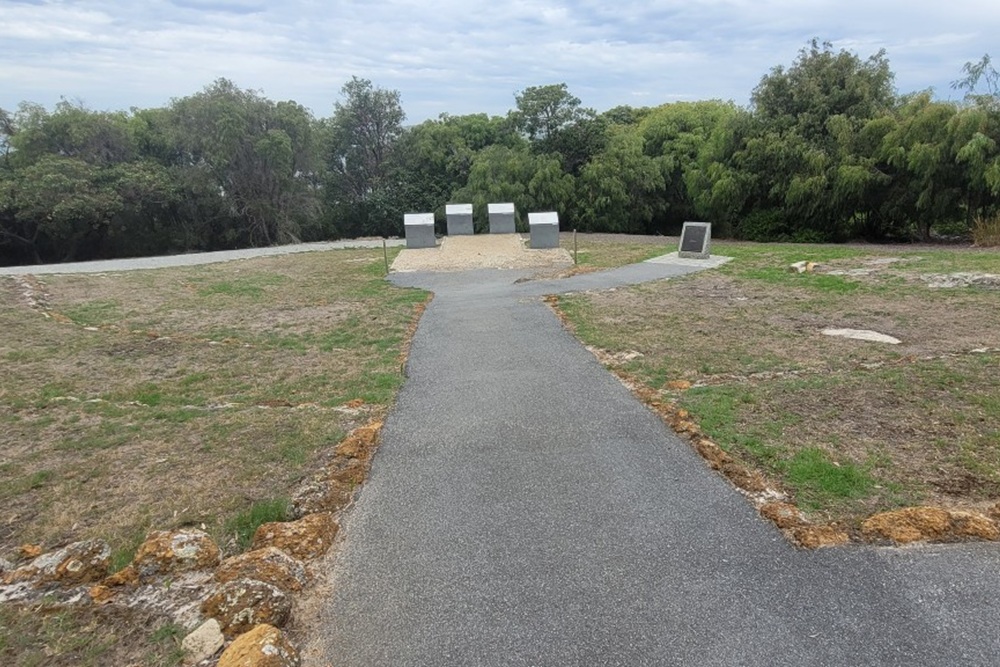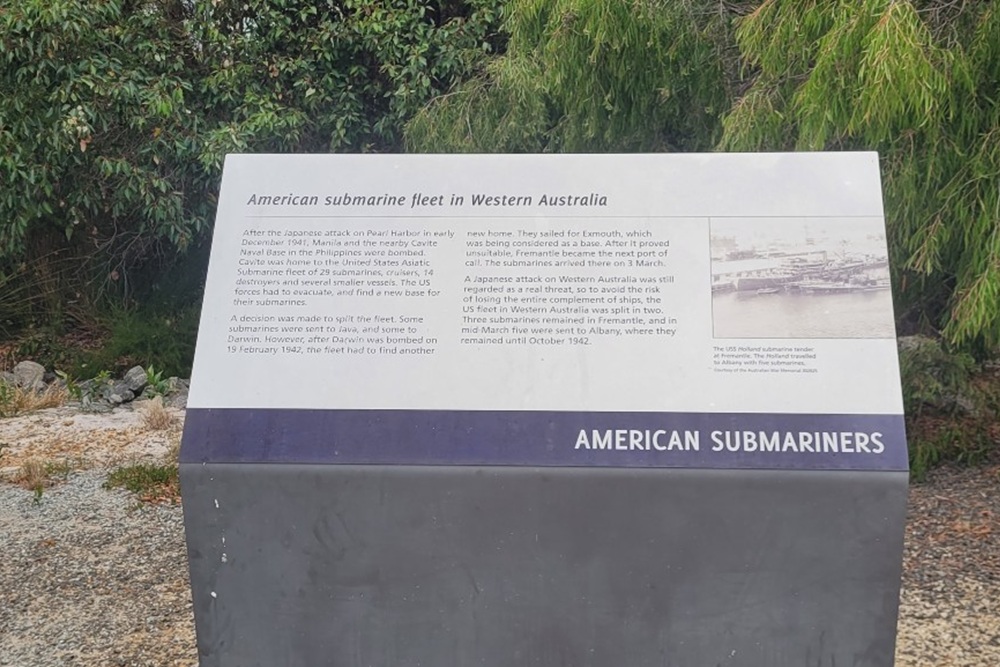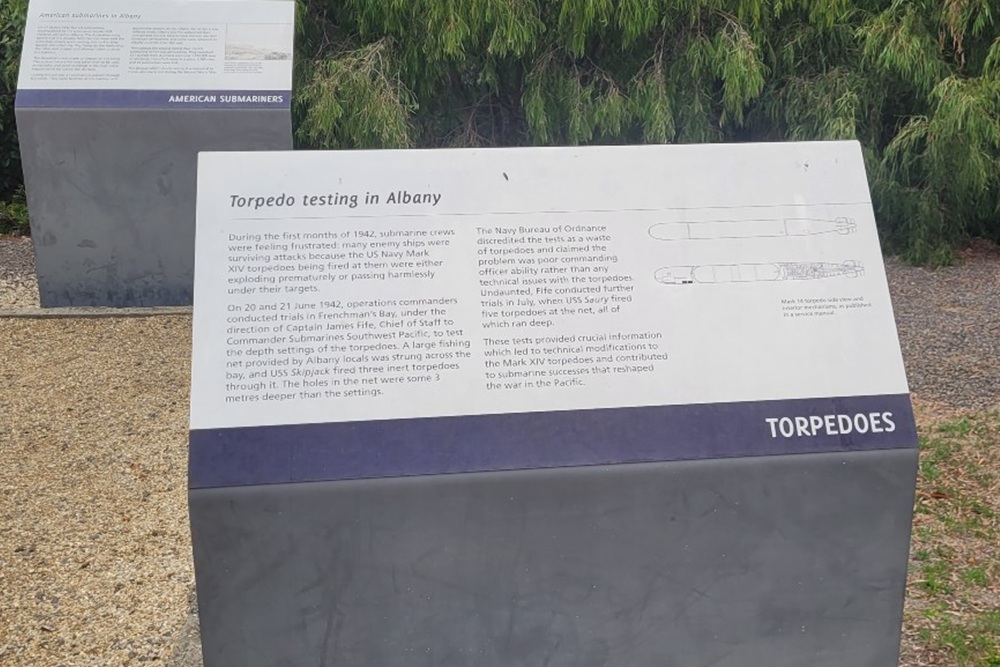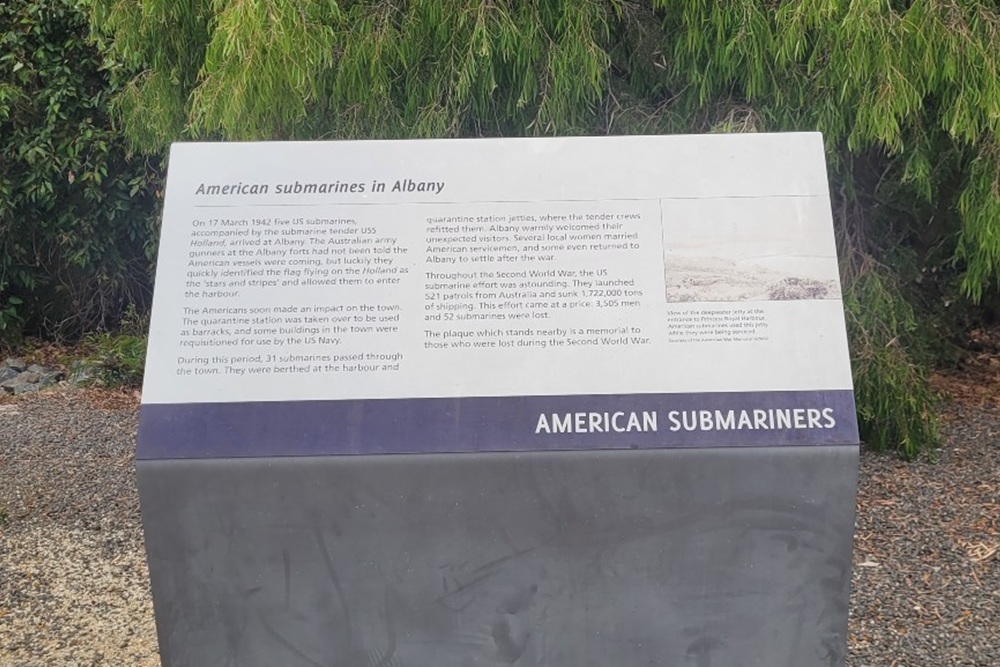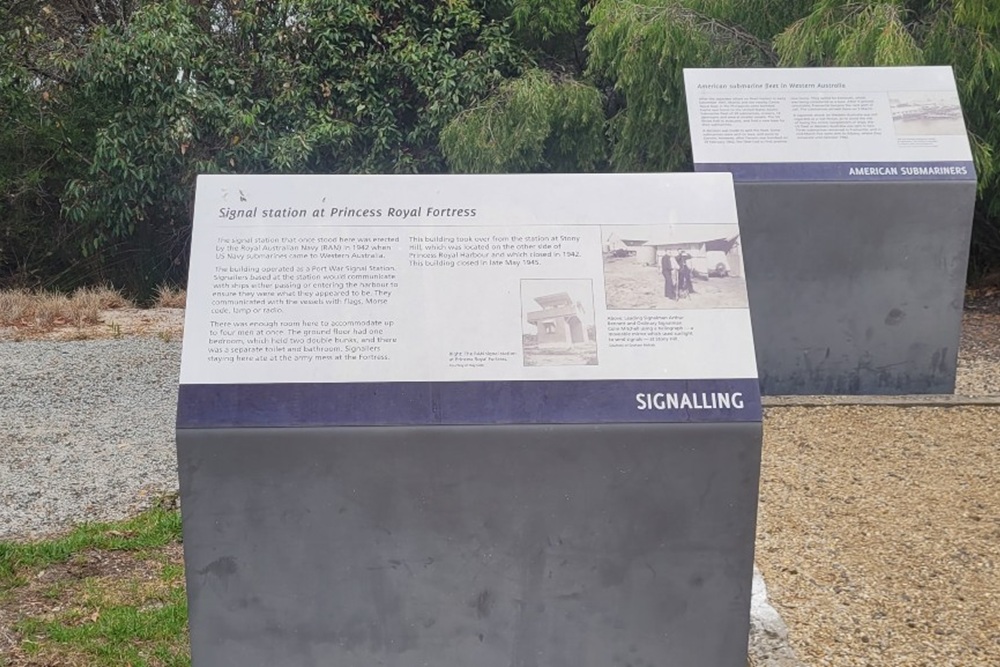Information Boards Princess Royal Fortress
Information Boards Princess Royal Fortress.
"Signalling
The signal station that once stood here was erected by the Royal Australian Navy (RAN) in 1942 when US Navy submarines came to Western Australia. The building operated as a Port War Signal Station. Signallers based at the station would communicate with ships either passing or entering the harbour to ensure they were what they appeared to be. They communicated with the vessels with flags, Morse code, lamp or radio.
There was enough room here to accommodate up to four men at once. The ground floor had one bedroom, which held two double bunks, and there was a separate toilet and bathroom. Signallers staying here ate at the army mess at the Fortress. This building took over from the station at Stony Hill, which is located on the other side of Princess Royal Harbour and which closed in 1942. This building closed in late May 1945."
"American submarine fleet in Western Australia
After the Japanese attack on Pearl Harbor in early December 1941, Manila and nearby Cavite Naval Base in the Philippines were bombed. Cavite was home to the United States Asiatic Submarine fleet of 29 submarines, cruisers 14 destroyers and several smaller vessels. The US forces had to evacuate and find a new base for their submarines,
A decision was made to split the fleet. Some submarines were sent to Java, and some to Darwin. When Darwin was bombed on 19 Feb 1942, the fleet had to find another new home. they sailed for Exmouth, which being considered as a base, After it proved unsuitable, Fremantle became the next port of call. The submarines arrived there on 3 March.
A Japanese attack on Western Australia was still regarded as a real threat, so to avoid the risk of losing the entire complement of ships, the US fleet in Western Australia was split in two. Three submarines remained in Fremantle and in mid March five were sent to Albany, where they remained until October 1942.
American submarines in Albany
On 17 March 1942 five US submarines accompanied by the submarine tender USS Holland arrived in Albany. The Australian army gunners at the Albany Forts had not been told the American vessels were coming, but luckily they quickly identified the flag flying on the Holland as the 'stars and stripes' and allowed them to enter the harbour.
the Americans soon made an impact on the town. The quarantine station was taken over to be used as barracks, and some buildings in the town were requisitioned for use by the US Navy.
During this period, 31 submarines passed through the town. They were berthed at the harbour and quarantine station jetties, where the tender crews refitted them. Albany warmly welcomed their unexpected visitors. Several local women married American servicemen, and some even returned to Albany to settle after the war.
Throughout the Second World war, the US submarine effort was outstanding. They launched 521 patrols from Australia and sunk 1,722,000 tons of shipping. This effort came at a price: 3505 men and 52 submarines were lost.
The plaque which stands nearby is a memorial to those who were lost during the Second world war.
Torpedo Testing in Albany
During the first months of 1942, submarine crews were feeling frustrated: many enemy ships were surviving attacks because the US Navy Mark XIV torpedoes being fired at them were either exploding prematurely or passing harmlessly under their targets.
On 20 and 21 June 1942, operations commanders conducted trials in Frenchman's Bay under the direction of Captain James Fife, Chief of Staff to Commander Submarines Southwest Pacific, to test the depth settings of the torpedoes. A large fishing net provided by Albany locals was strung across the bay, and USS Skipjack fired three inert torpedoes through it. The holes were in the net were some 3 metres deeper than the settings.
the Navy Bureau of Ordnance discredited the tests as a waste of torpedoes and claimed the problem was poor commanding officer ability rather than any technical issues with the torpedoes. Undaunted , Fife conducted further trials in July, when USS Saury fired five torpedoes at the net, all of which ran deep.
These tests provided crucial information which led to technical modifications to the Mark XIV torpedoes and contributed to submarine successes that reshaped the war in the Pacific"
Do you have more information about this location? Inform us!
Source
- Text: Sharky Ward
- Photos: Anthony (Sharky) Ward
Nearby
Museum
Point of interest
Monument
Cemetery
- Commonwealth War Grave Albany Quarantine Cemetery - Vancouver Peninsula
- Commonwealth War Graves Albany Old Public Cemetery - Albany
